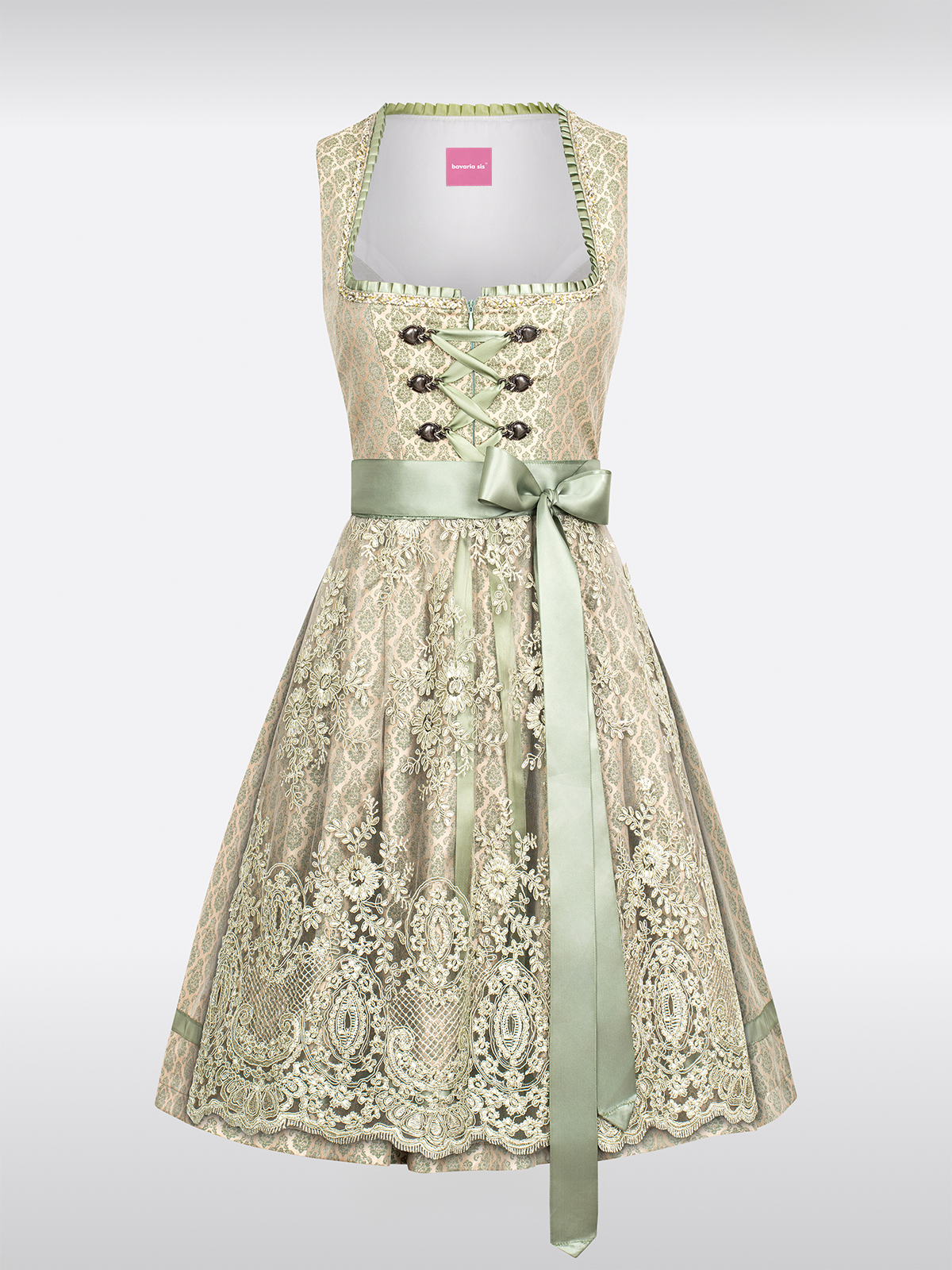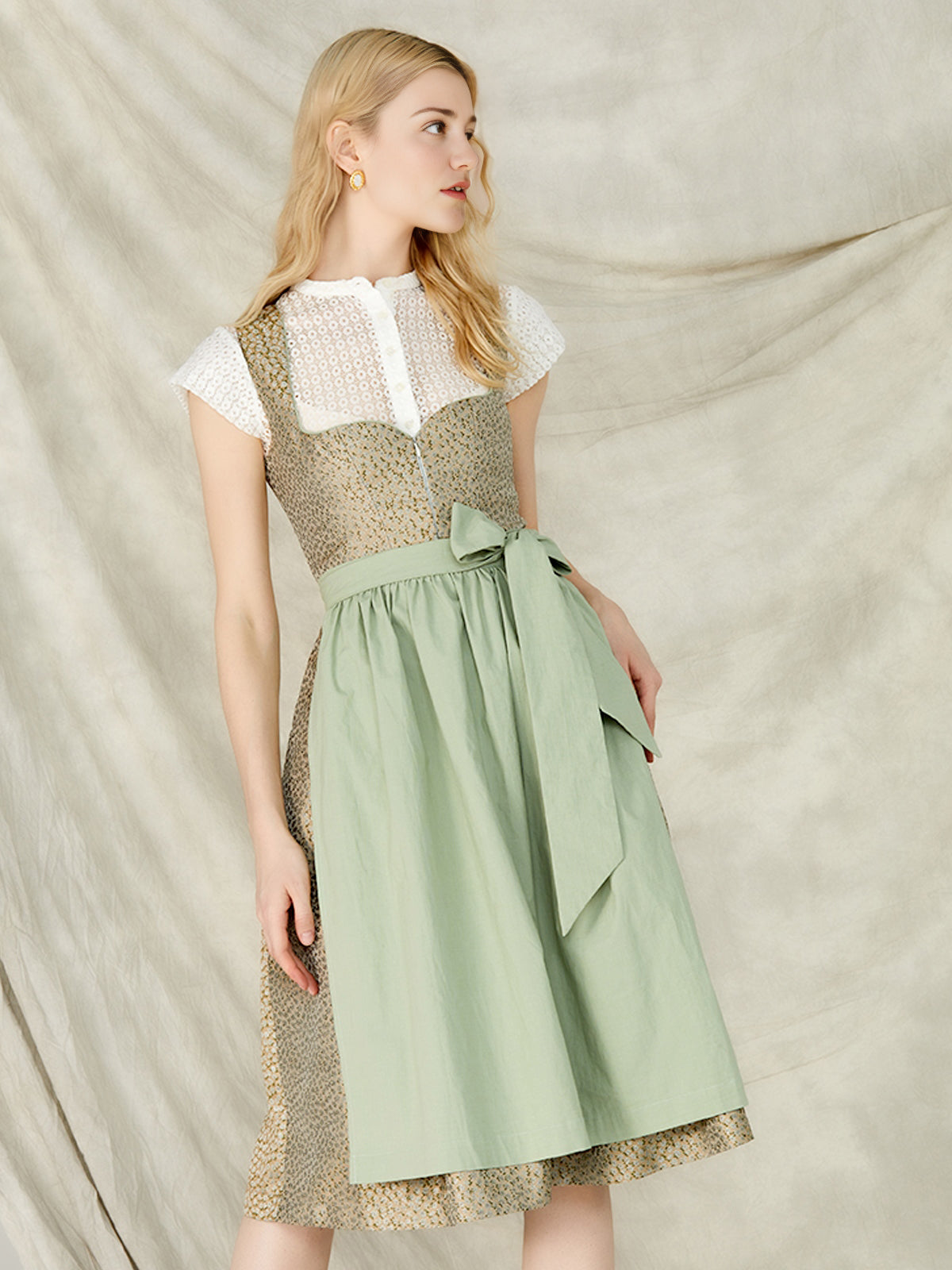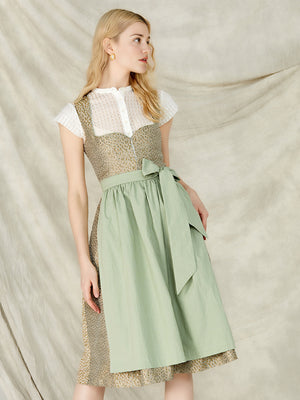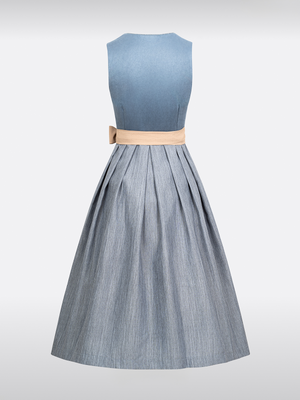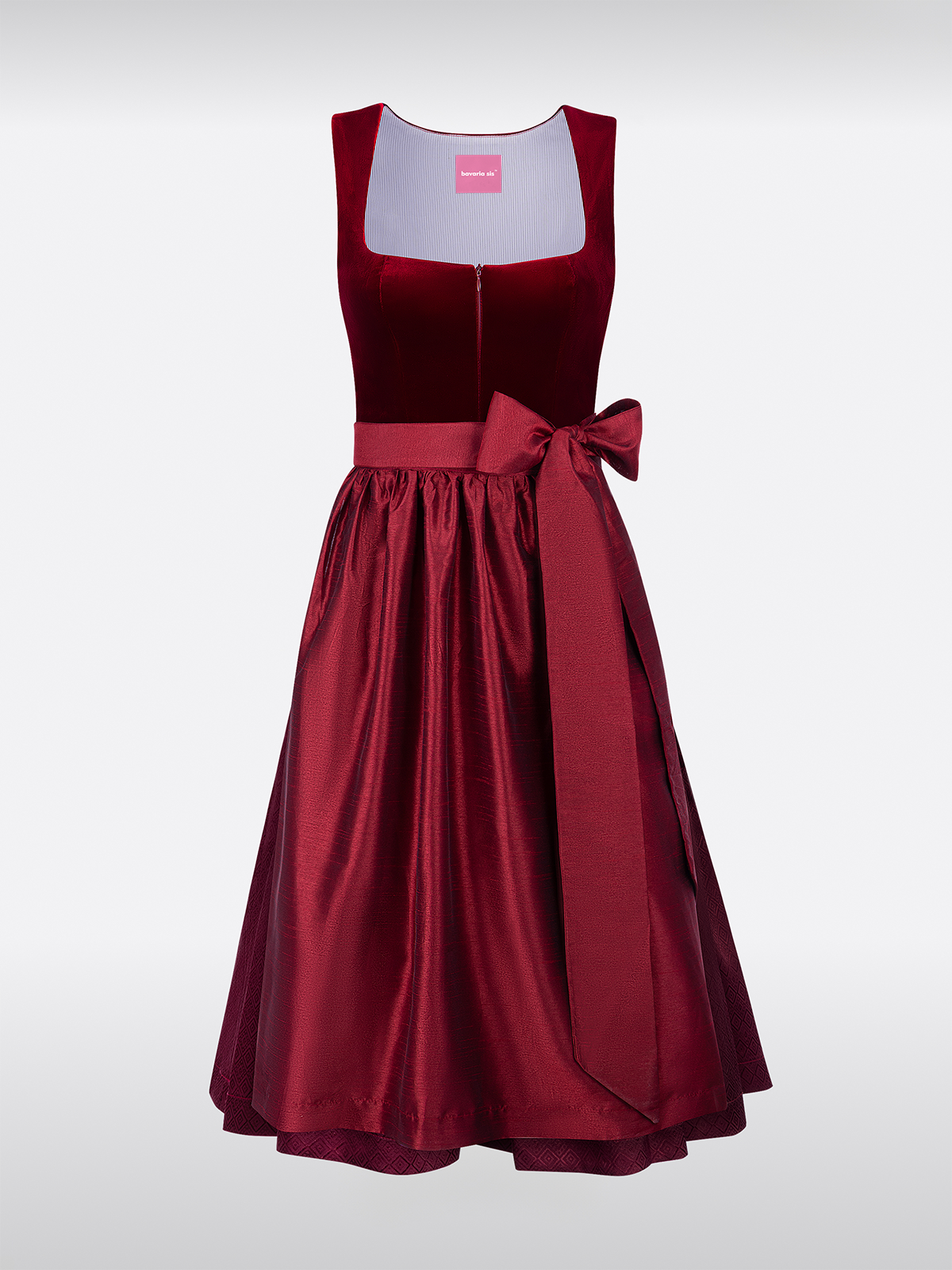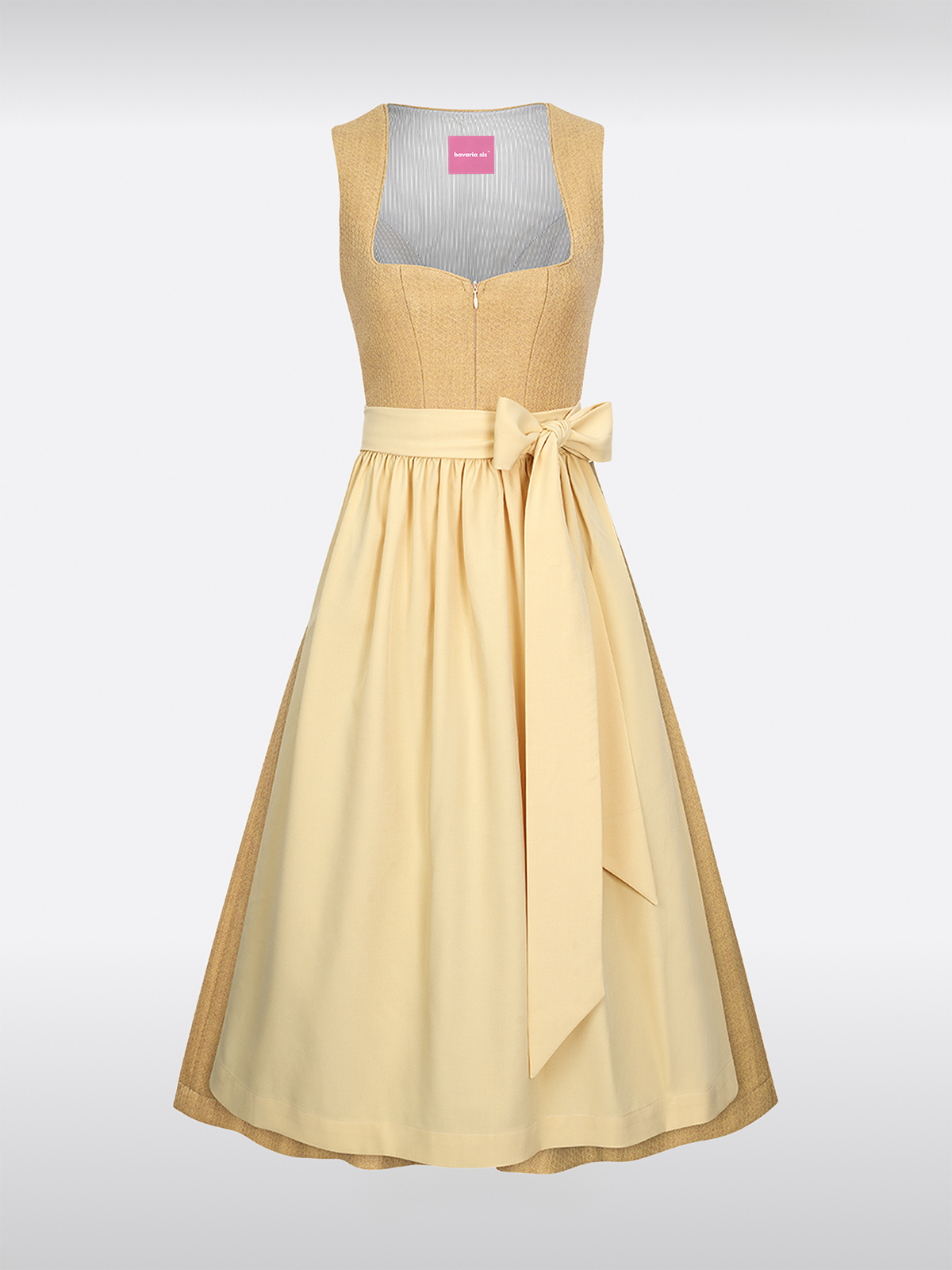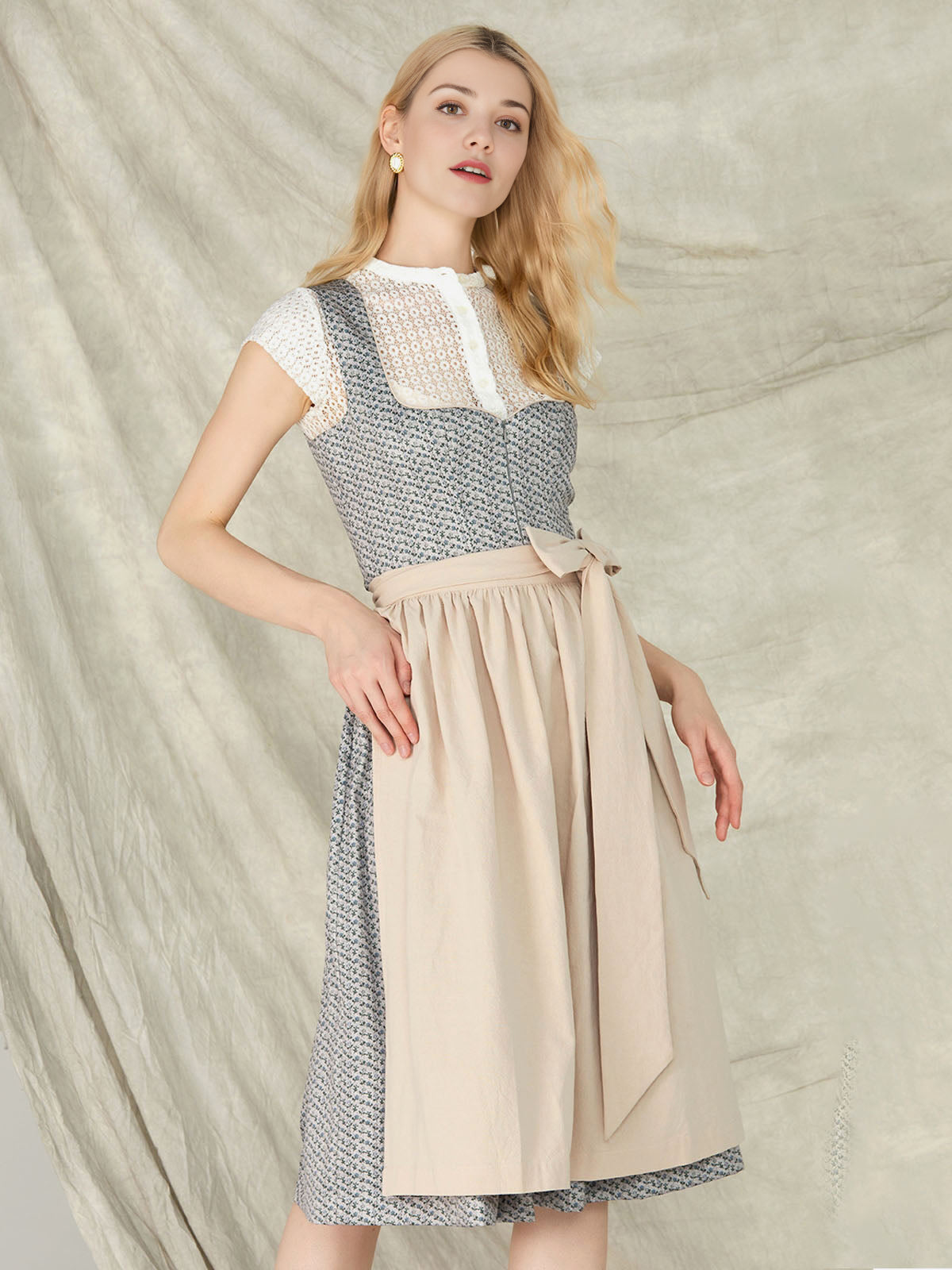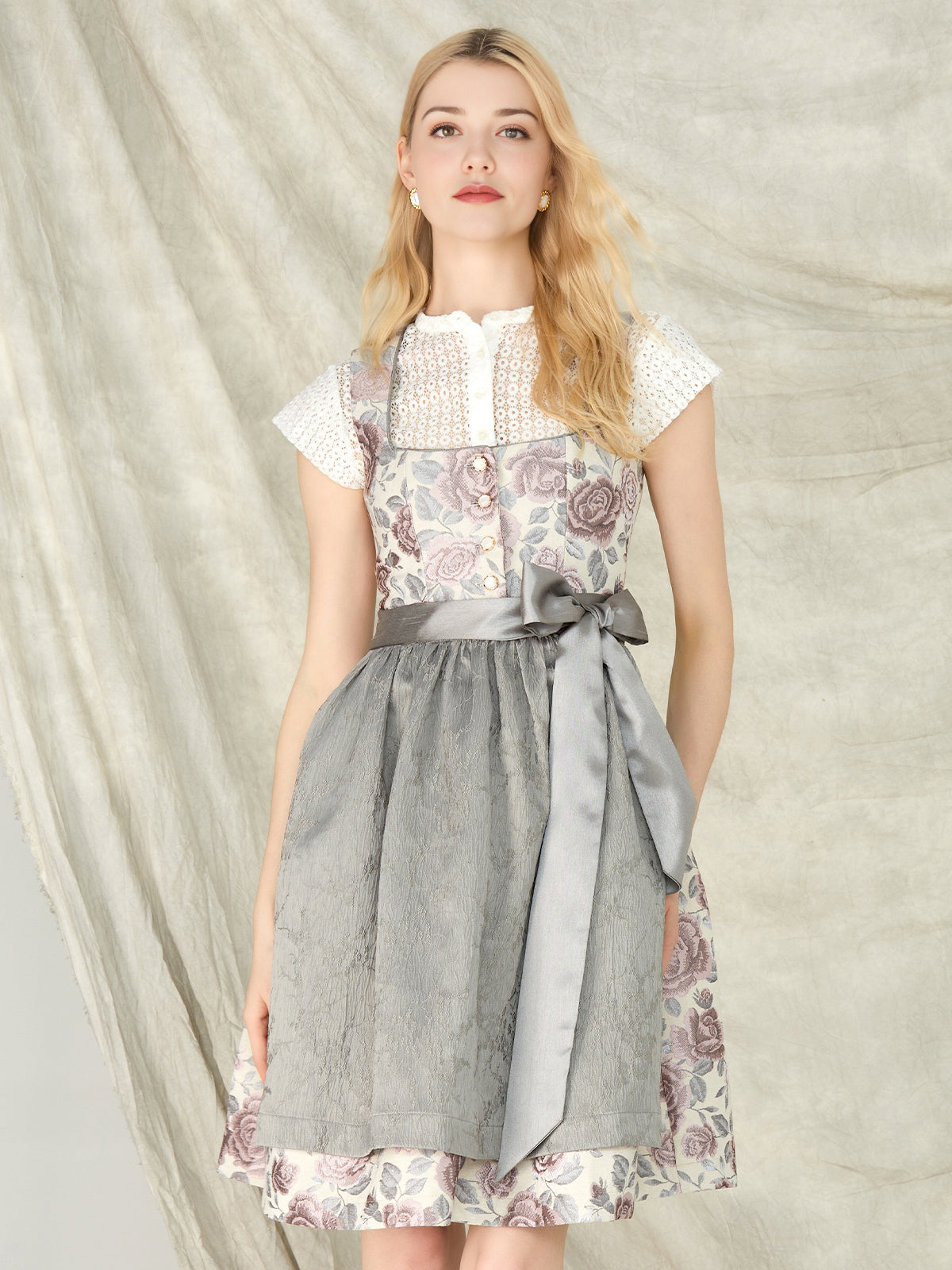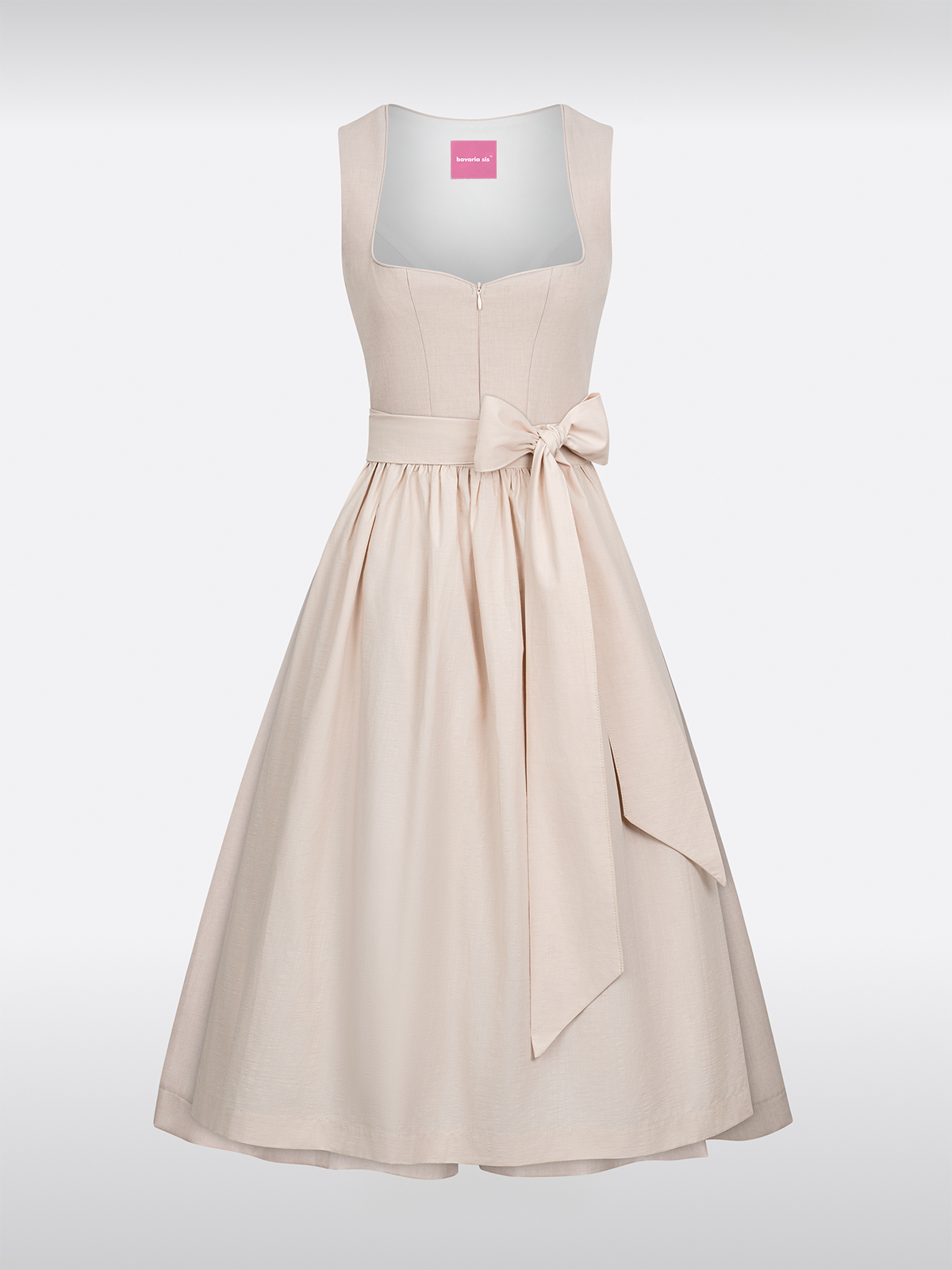Introduction: The Transformation of a Cultural Symbol
The dirndl, once regarded as practical workwear for Alpine peasant women, has evolved into a global fashion icon. Its history reflects not only the fashion history of Germany and Austria, but also the social transformations of the last three centuries. In this article, we explore the green dirndl-Evolution from farmwork to runway elegance and explore how Prada's 2019 collection took tradition into the future of design.
I. Origins: The Dirndl as Workwear (17th–18th Century)
1.1 Functionality above all
In the 17th century, women in the mountains of Salzburg wore a simple dress made of wool or linen: a dirndl light green or a white shirt with a tight apron. The silhouette was straight, and the skirt was above the knee—practical for fieldwork.
- Material: Robust fabrics such as linen or wool.
- Colors: Natural tones such as green dirndl (olive green) or earth brown dominate.
1.2 The transition to the nobility
In the 18th century, the nobility adapted peasant dress. With the advent of the Rococo style, elements such as puffed sleeves and bows were introduced. The apron became a decorative accessory, while the skirt width increased.
II. The Rococo Revolution: From Country House to Palace (19th Century)
2.1 The stylization of the dirndl
The modern form of the dirndl emerged in the 19th century. Bavarian designers combined French Rococo elegance with Alpine practicality:
- Waist: Tight-fitting waist thanks to corsets.
- Pattern: Floral patterns and pastel colors like dirndl green pink (Pink-green combinations).
- Symbolism: The position of the bow on the top signaled the relationship status (left = single, right = married).
2.2 The rise of national identity
The dirndl became a symbol of Bavarian patriotism. At the 1835 Oktoberfest, it was presented as a "bourgeois costume," and from 1930 onward, it was promoted by the state—with disastrous consequences.
III. The Darkness of the National Socialists: Politicization and Propaganda (1930s–1945)
3.1 The instrumentalization by the Nazi regime
Under the Nazi regime, the dirndl became an instrument of the national community:
- Cuts: Skirt length was shortened to emphasize the “Aryan” body.
- Colors: Green dirndl and other “pure” tones were propagated.
- Control: Women had to wear the dirndl at public events to symbolize “German” femininity.
3.2 Post-war crisis and reconstruction
After 1945, the dirndl lost credibility. It wasn't until the 1980s that it was revitalized through the efforts of cultural activists like Elsbeth Wallnöfer, who freed it from ideological burdens.
IV. Modernity: From traditional costume to catwalk icon (21st century)
4.1 Prada 2019: The Neo-Milkmaid Era
In spring/summer 2019, Prada revolutionized the dirndl:
- Design: Puff sleeves, fitted silhouettes and dirndl light green-Tones were combined with nylon materials.
- Cultural references: The collection referenced the “Milkmaid” aesthetic of the Baroque period, but with a futuristic twist.
- Impact: The line sold out within hours and set new trends in streetwear.
4.2 Sustainability and Innovation
Today, designers are experimenting with ecological materials. Green dirndl versions made from organic cotton or recycled polyester appeal to an environmentally conscious target group.
V. Outlook: The future of the Dirndl
The dirndl has long since left its rural roots behind. With its green-pink dirndl color combinations and Prada's avant-garde interpretations, it demonstrates its ability to adapt to the zeitgeist. The next step? Perhaps a fusion with smart textiles or virtual fashion shows.
Closing words
From farmwork to haute couture, the dirndl is more than just a garment. It's a living archive of German history and a testament to how traditions can be reborn through innovation.

